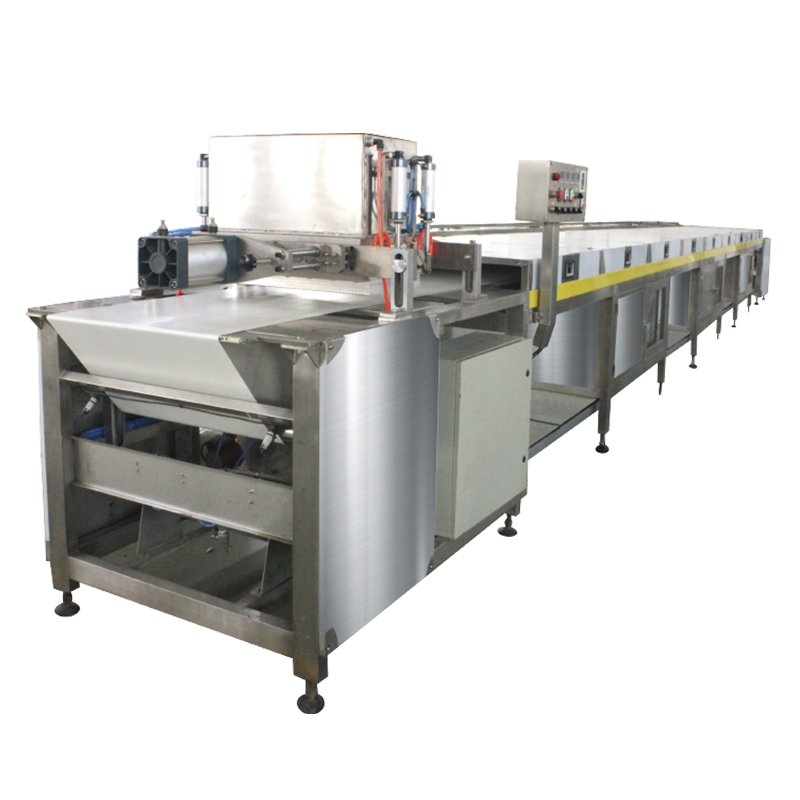Chocolate chips are beloved by many, adding a delectable burst of flavor and texture to baked goods, confectioneries, and desserts. Behind these tiny morsels of sweetness lies a fascinating production process that involves the transformation of cocoa beans into the irresistible treats we know and love. In this article, we will delve into the world of chocolate chips line production, unraveling the intricate steps involved in creating these bite-sized bursts of chocolaty goodness.
Sourcing and Grinding the Beans:
The journey of chocolate chips begins with the careful selection of high-quality cocoa beans. These beans are sourced from regions known for their superior cocoa varieties. Once harvested, the beans undergo a thorough cleaning process to remove any impurities. Subsequently, they are roasted to develop their characteristic flavor profiles and then cracked to separate the cocoa nibs from the husks.
The cocoa nibs are then ground into a thick paste known as chocolate liquor, which consists of cocoa solids and cocoa butter. The grinding process can be performed using traditional stone grinders or modern grinding equipment, ensuring the smoothness and consistency of the resulting chocolate liquor.
Refining and Conching:
To achieve the desired texture and taste, the chocolate liquor undergoes a refining process. This involves passing the liquor through specialized equipment, such as roller refiners, to further reduce the particle size and enhance the smoothness. This refining step contributes to the velvety texture of the final chocolate chips.
Following refining, the chocolate undergoes conching, a crucial process that involves the continuous agitation and heating of the chocolate. This process helps to develop flavor, remove unwanted acids, and improve the overall quality and consistency of the chocolate. Conching can take several hours or even days, depending on the desired flavor profile.

Tempering and Molding:
Tempering is a crucial step in chocolate chip production, as it ensures that the chocolate has the right crystal structure for optimal texture, appearance, and shelf life. During tempering, the chocolate is carefully heated and cooled to specific temperatures while being agitated. This process encourages the formation of stable cocoa butter crystals, resulting in a glossy appearance and a smooth, snapable texture.
Once tempered, the chocolate is ready for molding into its signature chip shape. It is poured into molds or deposited onto a flat surface and then cooled to solidify. After the chocolate has set, it is broken or chopped into small, irregularly shaped pieces, giving us the familiar chocolate chips that are perfect for baking or snacking.
Packaging and Distribution:
The freshly produced chocolate chips are carefully packaged to maintain their quality and prevent moisture absorption. Packaging options may include bags, pouches, or containers that provide protection and ensure the chips' freshness during storage and transport.
Chocolate chips are distributed to various industries, including baking, confectionery, and food manufacturing. They find their way into households, bakeries, and commercial kitchens, where they are used in a wide range of delicious creations, from cookies and brownies to ice cream and pastries.
The journey from cocoa bean to chocolate chips involves a meticulous process that combines art, science, and a passion for exceptional chocolate. Each step, from sourcing and grinding to refining and tempering, contributes to the creation of these small yet incredibly flavorful treats. The chocolate chips line production process ensures that every morsel delivers the rich, velvety taste that brings joy to chocolate lovers around the world.


 中文简体
中文简体 English
English Français
Français عربى
عربى


